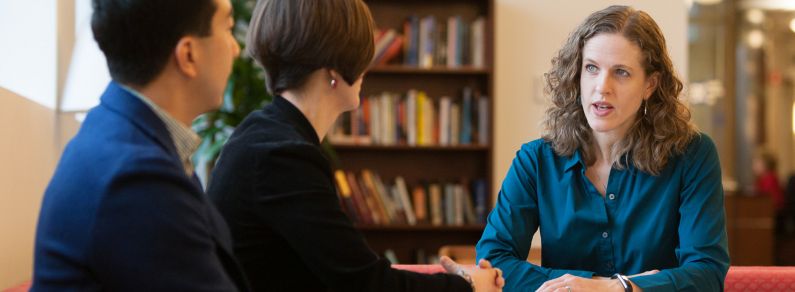13 Reasons Why: An Opportunity for Prevention
June 08, 2018

Last year, the Netflix show 13 Reasons Why made quite an impact. Teens and young adults were mesmerized by a show that tackled the issues of bullying, sexual assault, and suicide head-on, and in graphic detail. Parents, schools, and suicide prevention professionals were frustrated that the show took a potentially unsafe approach, worried about the show’s impact on suicide risk for young people in their community, and were unsure in many cases how to respond. Yet, this is not the first time that TV or movie content has raised concerns about safety and potential harm. Now that 13 Reasons Why is back for a second season, I encourage us all to use it as an opportunity to strengthen efforts to prevent suicide and other forms of violence among young people.
First, remember that suicide is complex. The way the series portrays suicide and the unhelpful reactions of some adult characters may be unsafe for young people who are already struggling with thoughts of suicide. Last year, news reports popped up about young people who had died by suicide after watching the series. However, we know that watching a television show on its own does not cause suicide—there are likely many other factors at play in these tragedies. If a suicide death or attempt in your state or community is rumored to be connected to 13 Reasons Why, work with your local prevention partners to find out the facts—this is the first step in an effective postvention response and helps prevent false narratives from spreading. Encourage your partners to join you in emphasizing to the public and news media that suicide is complex, and there is no single cause.
Second, let’s use the public conversation about the show to share prevention stories and helpful resources. The show will likely be the subject of news and social media buzz for several weeks, which is an opportunity for us to help shape the conversation. Reach out to your state or local news outlets to let them know about your prevention activities, including any information you have about how your work is making a difference in the community. Offer to connect reporters to teens who have struggled with thoughts of suicide and found help, or to adults who saw the signs and connected young people to help. Share the Recommendations for Reporting on Suicide, and encourage reporters, bloggers, citizen journalists, and public commentators to include contact information for the National Suicide Prevention Lifeline in their coverage, as well as any state or local resources that may be available for teens and parents.
Third, let’s offer prevention resources to schools, parents, and other members of the community who work with young people. 13 Reasons Why shows a fictional school and community responding to a suicide loss and other forms of violence, often not in an ideal way. Fortunately, there are many resources available for school staff and administrators, including the recently updated After a Suicide: A Toolkit for Schools, which helps schools prepare to respond appropriately should a tragedy occur in their school community. Also available are a number of supports for parents who may be concerned about their child. And SPRC has put together a list of resources to help people in a variety of roles respond to the series, including parents, school staff, community leaders, and members of the media.
Finally, let’s leverage this moment to make a connection with related prevention fields. 13 Reasons Why brings up issues like substance abuse, violence, sexual assault, and bullying, all of which share risk and protective factors with suicide—and many of which may add to suicide risk. The buzz around the show is a good moment to connect with partners working in these areas, not only coordinating our efforts to work with media, schools, parents, and communities, but also identifying other ways in which our prevention efforts intersect. Working together can help us pool limited resources and promote each other’s efforts.
Many in our field, including the National Action Alliance for Suicide Prevention’s Changing the Conversation Priority Workgroup, are working hard behind the scenes with the entertainment industry to change the national narrative around suicide. Their aim is to ensure that future content in movies and television promotes help, connectedness, social support, resilience, treatment, and prevention messages and stories. In the meantime, 13 Reasons Why is not the first entertainment product that’s caused concern. Let’s seize these opportunities to tell people about helpful resources, promote stories of hope, and engage schools and communities to help them respond safely, compassionately, and effectively.
